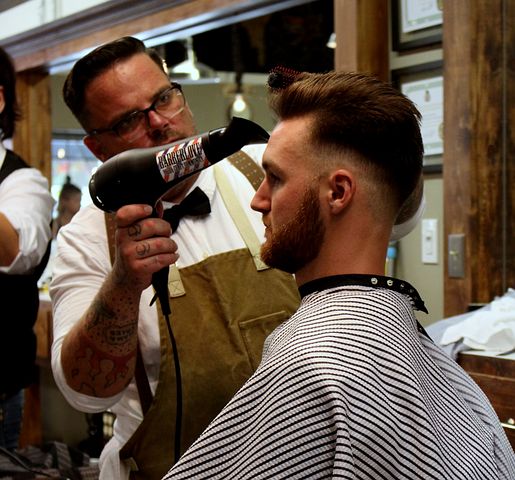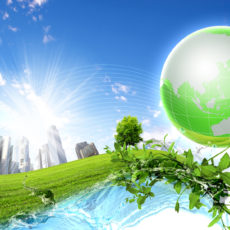
We all know that beauty comes at a price. But what we now have to realize is that it’s becoming more expensive for the planet than for our wallets. It’s no secret that the beauty industry can have a very negative impact on our environment – from the chemicals to the plastic to the the amount of waste. And then there’s the animal testing considerations…but this is not the time or place for that conversation. But while we’ve been aware of the impact of things like plastic beads in our facial scrubs (which are now thankfully banned in several countries, including the United States!), we’ve not been thinking enough about what that trip to the hair salon is really costing.
These are the main areas which a salon visit can have a negative impact on the environment:

- Electricity – seems obvious, doesn’t it? The constant blast of the hair dryers, the very bright lights, the curling (and straightening) irons, the hot water;
- Water – yep, another obvious one.
- Chemicals – these are in almost every hair product your stylist will reach for. (Unless they’re a certified organic salon).
- Waste – this is a big one. So much of the waste produced isn’t recyclable, so straight to landfill it goes. And even if the plastic is recycled, the sheer amount of plastic used is contributing to the issue far more quickly than recycling it can offset. But the foil is the biggest problem. Most places in the U.S. require aluminum foil to be clean before it can be recycled, and it must be in very large balls so as to not clog the sorting machines. So unless your stylist washes each sheet after removing it from your newly colored hair, and then scrunches it to a large, tight ball, it ends up in the trash.
So the next time you’re making your booking, why don’t you think about your salon in these terms? And why not just ask them what their moves are to become more sustainable and environmentally responsible? It might be something as simple as unplugging all the tools when not in use; or switching to LED lights, and installing sensors for rooms like the break room and restroom; using cold water for laundering the towels (or using single use eco-towels, which completely biodegrade in 12 weeks, or can be recycled as cardboard); or slightly more difficult steps, like using organic products, to rid the waterways of the chemicals.
Sustainability isn’t just better for the environment. Eco Hair and Beauty have shown that an average 4 chair salon being operated sustainably can save 24,150 kWh of energy per year. This not only equates to saving thousands of dollars, but also prevents 16.3 tons of CO2 being released into the atmosphere every year!

In the U.S. there’s a group called Green Circle Salons, who are tackling the problem from the other side. They take care of the salon’s waste, repurposing up to 95% of it into a desirable commodity. They take the foil, leftover hair color, aerosol cans, color tubes, paper and plastic, and even the hair! They also provide a handy directory of salons who’ve adopted their services for the betterment of the planet.
In Australia there’s a social enterprise called Sustainable Salons, who also repurpose salon waste. This team of sustainability warriors donate long ponytails of cut off hair to wig makers (but also collect all other hair clippings to make sausage like structures to help clean up oil spills); and collect used razors; all metals, like the foils; plastics; chemicals; and even unwanted appliances. They too offer a directory of salons with sustainability top of mind.
But what about in between your salon visits? Can you look after your hair at home while continuing your journey to sustainability? You sure can! Implement these top tips to keep your top of head looking good, while limiting your negative environmental impact.

- Wash less. Your hair could almost certainly be washed less than your currently doing it. Twice a week washing, and using a leave-in conditioner could mean you emit only 250 kg of CO2 per year. Compared with those who wash daily, with a whopping CO2 footprint of 455 kg per year!
- Use eco friendly tools. Purchase wooden or bamboo brushes and combs, not their plastic counterparts.
- Ditch the chemicals. Not only is this better from a manufacturing perspective, and looking after your own health and well being, it’s much better for our waterways and the life they support.
- Read the labels – with an interpreter! Often companies can ‘hide’ the actual contents with long words. Did you know there’s actual plastic in that shampoo you often use? And formaldehyde, a known carcinogen, in your keratin treatment??
- Pump it up. I’m not just referring to voluminous locks: leave the aerosol hair spray in the 80’s, and find pump action or squeezy alternatives.
- Air dry. If you can manage to get your hair at least most of the way dry without the aid of blow dryer you’ll definitely be helping reduce your utility bill – and your CO2 emissions (that 250 kg/year I mentioned above doesn’t take into account using hot tools of any description).
- Leave in or opt out. Conditioner isn’t actually a necessity for most people’s locks. But if you’re not one of the lucky ones, use a version of hydrating goo which you smear in and don’t wash out. You’ll save money on product and on water.
So luckily there’s plenty of ways to keep you hair, be it short or long, straight or curly, looking pristine and healthy – while not costing the earth more than it should pay.



